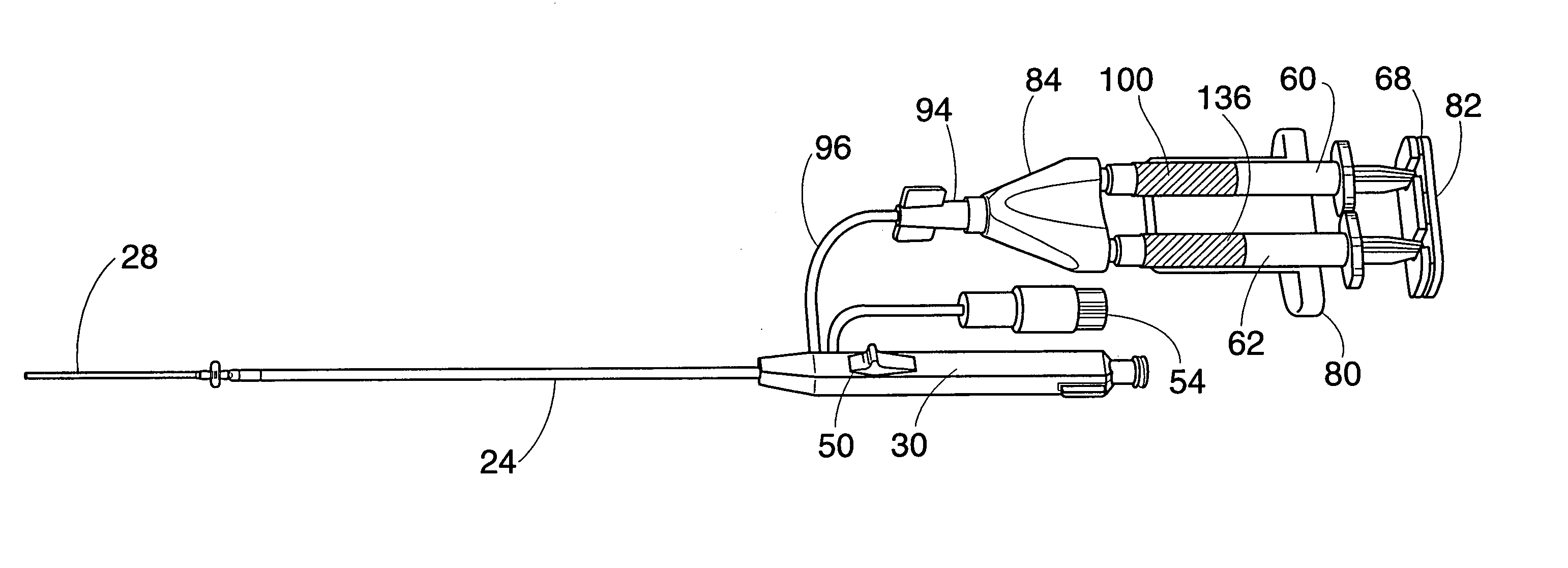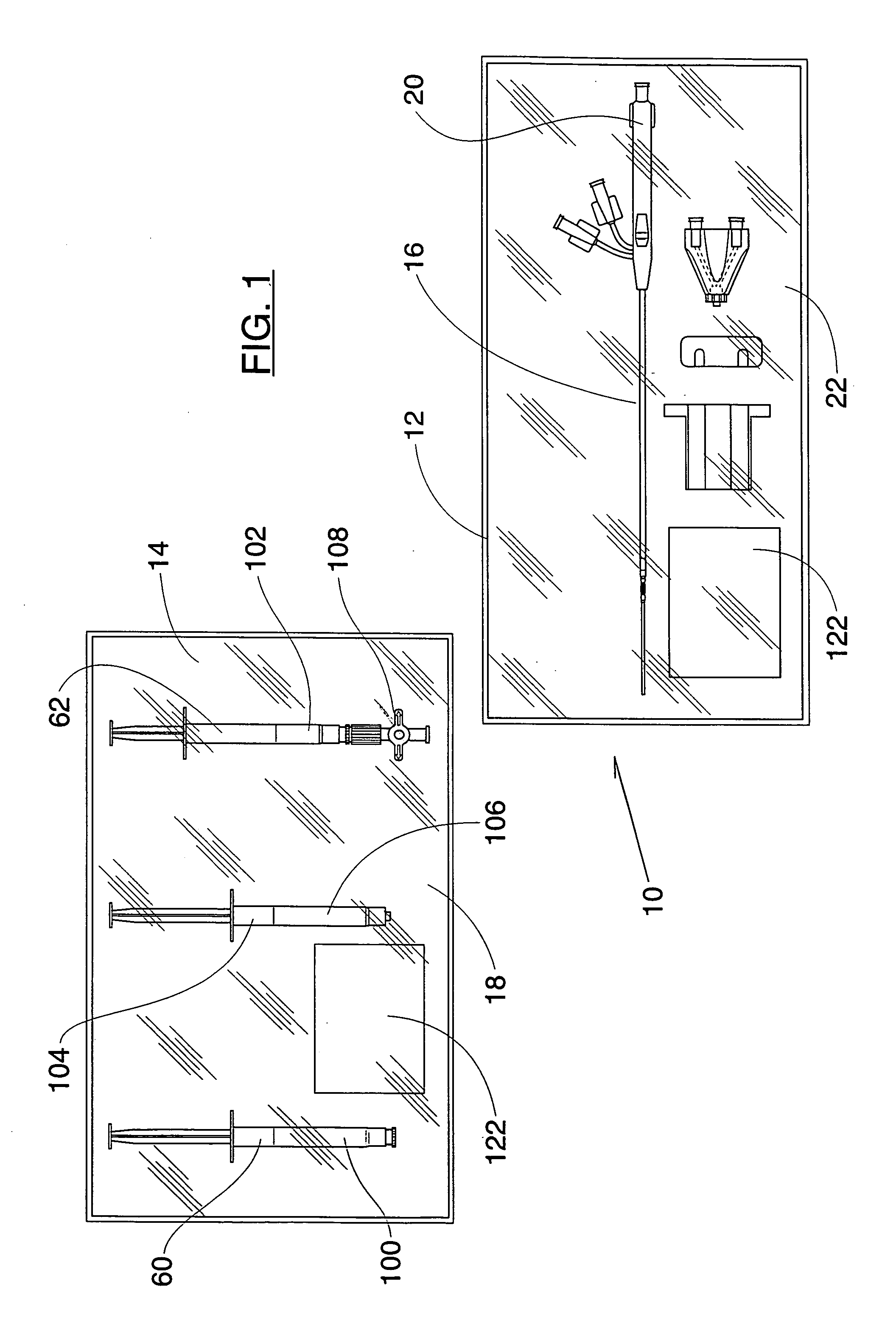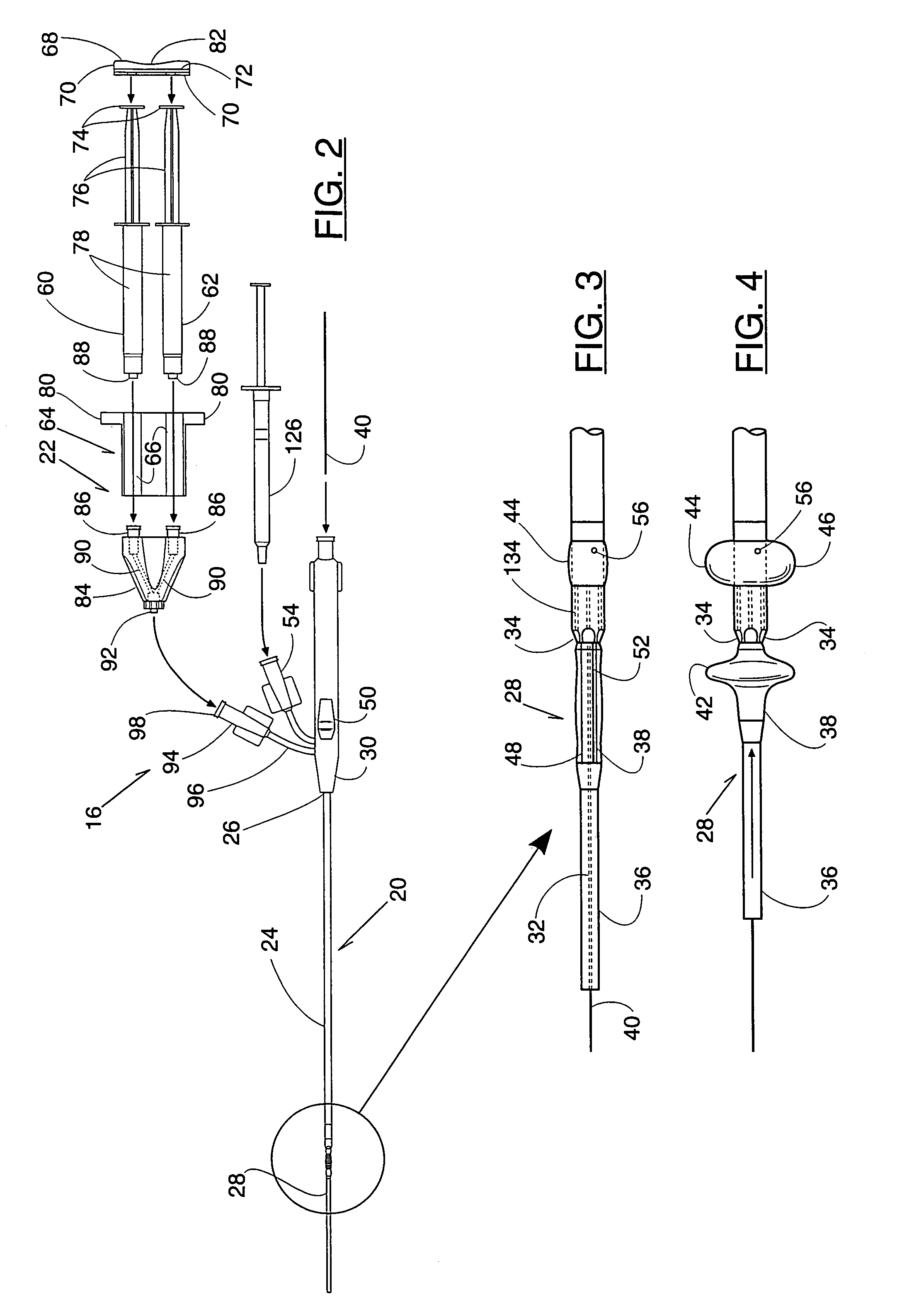Systems for applying cross-linked mechanical barriers
a mechanical barrier and cross-linked technology, applied in the field of barrier materials, can solve the problems of rebleeding, direct surgical repair of puncture site, distal embolization of collagen, and patient discomfort localized,
- Summary
- Abstract
- Description
- Claims
- Application Information
AI Technical Summary
Problems solved by technology
Method used
Image
Examples
example 1
Preparation of Cross-Linked Barrier Networks
[0127]Cross-linked barrier networks were formed by the mixture of an 4-PEG-SG and albumin. A solution of 4-PEG-SG was prepared by dissolving 0.40 g in 2.0 mL of water. The albumin solution consisted 25% human serum alburmin, USP (Plasbumin-25, Bayer Corporation), as received.
[0128]Dispensing syringes containing 2.0 mL of the polymer solution and 2.0 mL of albumin solution were connected to the joiner 84, to which a spray head was coupled. The solutions were sprayed into a polystyrene weigh boat. A cross-linked barrier network formed at room temperature in about 90 seconds.
example 2
Control of the Rate of Gelation
[0129]The rate of formation of the cross-linked barrier network of 4-PEG-SG and albumin (i.e., gelation) can be controlled by the pH of the reactive solution. To increase the rate of cross-linking, the pH of the solution is increased, and conversely, to decrease the rate of cross-linking, the pH of the solution is decreased. The pH of the solution is controlled by both the buffer strength and buffer pH.
[0130]Table 1 shows the effect of buffer strength on the rate of gelation of 17% w / w 4-PEG-SG in water for injection and 25% human serum albumin, USP at room temperature. The rate of gelation can also be controlled by adjusting the pH of the buffer at a constant buffer concentration. The buffer was placed in the solution of albumin. The gelation time is the amount of time required for the formulation to transform from the liquid state to the cross-linked solid state.
[0131]
TABLE 1Effect of Buffer Strength andBuffer pH on Gel FormationBufferConcentrationBu...
example 3
Channel-Mixing
[0132]A solution of 4-PEG-SG was prepared by dissolving 0.40g in 2.0 mL of water. The albumin solution consists 25% human serum albumin, USP (Plasbumin-25, Bayer Corporation), buffered to pH 9.0.
[0133]Syringes containing 2.0 mL of the polymer solution and albumin solution were connected to the joiner 84. A cannula channel having an inside diameter of 1 mm and a length of 20 cm was attached to the outlet port 92 of the joiner 84. The solutions were expressed through the cannula channel into a polystyrene weigh boat.
[0134]The barrier network formed at room temperature in about 20 seconds. Qualitatively, the mechanical properties of the barrier network when sprayed (as in Example 1) and the barrier network when expressed through the cannula channel were equivalent.
[0135]This demonstrates that the barrier network can be formed by channel-mixing the liquid components, without static mixing, by delivery through a small diameter channel.
[0136]III. Puncture Site Closure Using ...
PUM
| Property | Measurement | Unit |
|---|---|---|
| Molar density | aaaaa | aaaaa |
| Molar density | aaaaa | aaaaa |
| Molar density | aaaaa | aaaaa |
Abstract
Description
Claims
Application Information
 Login to View More
Login to View More - R&D
- Intellectual Property
- Life Sciences
- Materials
- Tech Scout
- Unparalleled Data Quality
- Higher Quality Content
- 60% Fewer Hallucinations
Browse by: Latest US Patents, China's latest patents, Technical Efficacy Thesaurus, Application Domain, Technology Topic, Popular Technical Reports.
© 2025 PatSnap. All rights reserved.Legal|Privacy policy|Modern Slavery Act Transparency Statement|Sitemap|About US| Contact US: help@patsnap.com



